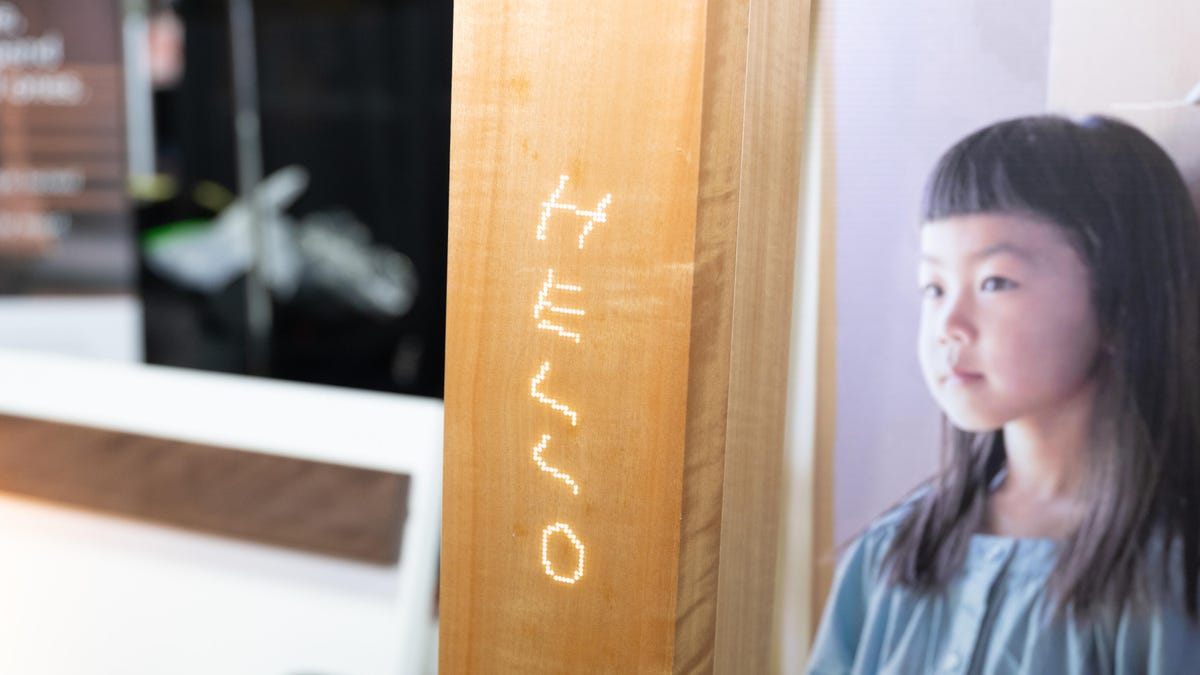These smart displays cast a uniquely beautiful vision for the future
The most exciting smart home tech recognizes that EQ is just as important as IQ.

Wading into the rising tide of reporters in this Las Vegas ballroom, scanning the rows of developer booths, I find what I'm looking for: what looks like a single wooden board propped on a table. Crammed around the table is a tight little theater of people, cameras set up, capturing the moment when Kaz Oki, Mui Lab's CEO, taps the wood, and illuminating a constellation of gentle LEDs across the panel. This is a smart display, but it looks nothing like an Amazon Echo Show or Google Home Hub. In short, it's beautiful.
The Mui Panel ($550) isn't new, though it's launching for the first time later this month. We covered it a few years ago when it was just a Kickstarter project. But the panel represents a growing trend of smart displays that focus less on pure computing power than something deeper -- an aesthetic philosophy of sorts.
See also
- CNET's 20 favorite products of CES 2020
- All the cool new gadgets at CES 2020
- Full coverage of CES 2020
The Mui Panel includes some of the smarts you'd expect in a smart display: the ability to send messages, check the time, connect to Wi-Fi. But Oki says he doesn't want the panel to become a distraction, to draw your eye as the screens all around us do so often already. Small touches help bring the underlying philosophy home. One feature just helps you breathe deeply. Another allows you to set timers, but only by tracing a finger across the wood. Doing so draws a line, which disappears pixel-by-pixel as the timer counts down.
These clever features, along with tracking your child's height over time, represent a really unique approach to smart home tech. It's an approach that I find really exciting.
Another display I discovered among the hundreds of exhibitors was from a company called Mystic Pants (yes, really). The Lyf Board is much earlier in its development than the Mui Panel, and very well may change or disappear over the coming years, but its approach is just as compelling.
When the screen is off, the Lyf Board looks like a standard smart display. But the screen boasts a retro-minimalist aesthetic, with appealing and colorful pixelated visuals against a stark black background. The focus, says CEO Aron Steg, isn't a touchscreen (an app controls the display) or the high sound quality. It's more focused than that, providing personalized information based on who's in the room at the moment. As a bonus, that personalization is based on phone proximity rather than facial recognition.
"It's meant for families," says Steg, which echoes what Mui Lab's CEO told me. The goal is to make a device with a compelling aesthetic, which brings a new look to the smart home space, and still accomplishes the primary functions of a smart display. And between Mystic Pants and Mui Lab, not to mention the touchscreen mirrors with beauty tips and miniprojectors here at CES, beautiful presentation seems like a bigger and bigger priority for smart home gadgets -- and that's a welcome innovation.

